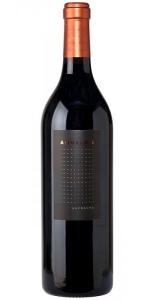Wine from Alto Moncayo
Bodegas Alto Moncayo is a winery located in the Campo de Borja D.O. It was founded in 2002 with the aim of turning it into a world reference for Garnacha wines of the highest quality, crafted from some of the oldest native vine clones in the area.The garnacha grape is one of the varieties that best expresses its terroir. Thus, the Garnacha of Alto Moncayo is different from the rest of the Campo de Borja D.O area. This is due to the very strict selection made from the vineyards, the type of soil in which it is grown, the microclimate, and the age of the vines.
Located in Borja- the heart of the Campo de Borja DO . Vines are planted at the foothills of El Moncayo which is the highest point in the Iberian Mountain Range (2,315 m) and the winery's namesake. The region experiences a continental climate with hot summers and cold winters. Vineyards are planted on very unique soils of red clay (indicative of being rich in iron) mixed with red slate, and because of the hillside location are shallow and nutrient-deficient.
The Garnacha grapes of Alto Moncayo undergo very strict vineyard selection, from vines planted as far back as the early 1900's through the 1970's. Only the most perfectly mature clusters are selected and carried in small crates to prevent crushing, where they are further sorted and selected at triage tables. Wines undergo malolactic fermentation in both French & American oak, and aged in new barrels between anywhere from 16-24 months. These practices, in combination with the unique microclimate of the area ensure superior quality Garnacha that is distinct from any other in the Campo de Borja D.O.
Bodegas Alto Moncayo Aquilon Garnacha is made from 100% Garnacha.
The wines of Alto Moncayo are crafted to express the unique terroir of windswept high elevation Campo de Borja DO; and to serve as a benchmark for world class Old Vine Garnacha.
Aquilón is "The jewel in the Crown" a selection of the best barrels from the best lots. The vines are 60-100 years old.
Review:
This garnet-colored wine offers aromas of black currant, black raspberry and black licorice, with just a touch of charcuterie. The fruit flavors shine through with subtle notes of crushed violet. It has soft tannic structure, with a pleasant bit of grippiness in the post palate as it leads up to the long, long, finish.
-Wine Enthusiast 95 Points
About the Vineyard
Vineyards in Tabuenca and Borja, planted with indegenous clones of Garnacha starting in the 1920s.
Wine Production
The selected highest quality grapes are placed into small stainless-steel tanks of 7 tons capacity. The must is basket pressed and fermentation is finished in new French and American oak where it complets the malolactic fermentation. Wine is aged in the barrels for 24 months before bottling.
Tasting Notes
Appearance: Very deep red, scarlet rim
Aroma: Minerals and vanilla. Hints of raisins and dark Chocolate
Palate: As typical of the vintage, power and intensity with disarming elegance.
Food Pairing:
Goes well with beef, pork, game based stews and rice dishes.
- back
Selected Options
Wineries
Categories
Pricing
Countries
Regions
Grape Types
Wineries
Organic/Free Shipping
Mollydooker Carnival of Love Shiraz is made from 100 percent Shiraz.
WHAT IS THE CARNIVAL OF LOVE?
This is as life should be – a Carnival of Love. A place where everyone wants to be, and no one wants to leave.
TASTING NOTES:
Intense in colour, flavour and aroma, our 2021 Carnival of Love Shiraz captivates the palate from the first sip. Powerful yet delicate, lifted aromas of red cherry, blackberry and turkish delight evolve, while subtle hints of mocha linger. Infectious chocolate cherry, fresh plum and liquorice add to the complexity, while creating a seamless structure and lingering finish.
TECHNICAL NOTES:
The grapes were grown on the Gateway vineyard in McLaren Vale. Barrel fermented and matured in 100% American oak, using 100% new barrels. The required Marquis Fruit Weight™ for the Love Series is 85% – 95%. The Actual Fruit Weight for 2021 Carnival of Love 88%.
Alcohol: 16.5%
pH: 3.66
Reviews:
Another sensational edition of the Mollydooker ‘Carnival of Love’ Shiraz from 2021 — and I am not the least surprised. I’ve had every edition of this wine for more than a decade. This bottling was as usual aged in all new American oak. On the nose this takes on dense black currant jelly, cigar box and shades of creosote with Arabica bean. The palate is soft and inviting with its plush texture and seamless mouthfeel as this effortlessly glides throughout the drinking experience. A joy to drink now so young, this will easily cellar for another ten years and potentially more. But why wait?
- Owen Bargreen 96 Points
Le Jade Picpoul de Pinet is made from 100% Picpoul de Pinet
Pale straw color. Delicate white flower, citrus and juicy pear aromas. Fresh, crisp, and bright acidity with mineral and saline accents. Well-balanced and easy-drinking.
A refreshing treat laced up with snappy food-friendly acidity.
Picpoul Le Jade makes a classic match with oysters on the half shell and goes very well with exotic food in general. Picpoul means lip-smacking good.
SOIL : Clay and limestone soil just a few kilometres from the reputed Etang de Thau (salted water lagoon) overlooking the Mediterranean town of Sète.
VINIFICATION : Grapes are harvested at 12°- 13° maturity
Skin maceration for several hours
Selection of drained juice after undergoing pneumatic pressure.
Cold double decantation.
Thermoregulated fermentation at 16°C
No malolactic fermentation.





